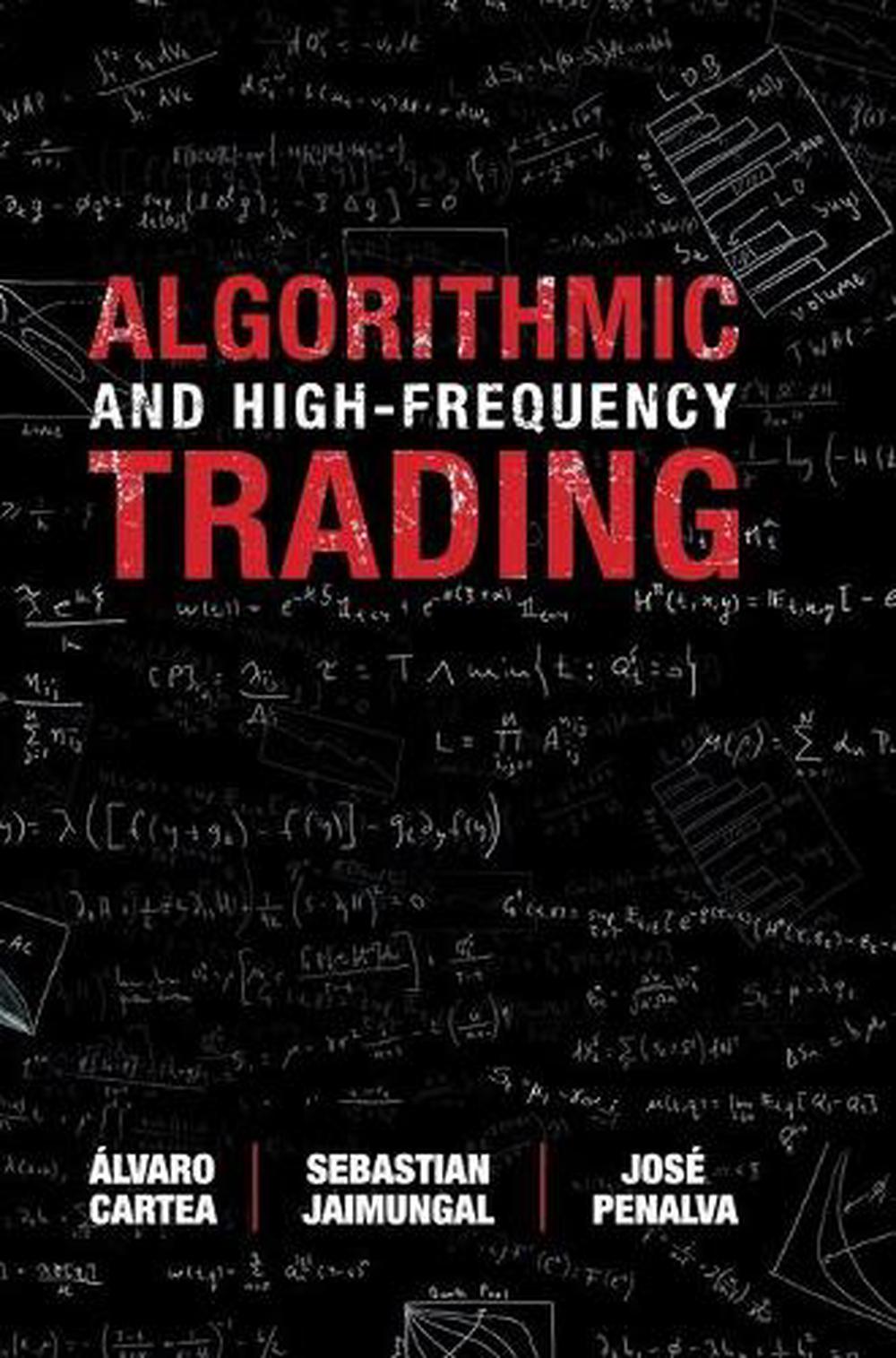
Algorithmic and High-Frequency Trading
$222.63
- Hardcover
356 pages
- Release Date
6 August 2015
Summary
The design of trading algorithms requires sophisticated mathematical models backed up by reliable data. In this textbook, the authors develop models for algorithmic trading in contexts such as executing large orders, market making, targeting VWAP and other schedules, trading pairs or collection of assets, and executing in dark pools. These models are grounded on how the exchanges work, whether the algorithm is trading with better informed traders (adverse selection), and the type of informati…
Book Details
| ISBN-13: | 9781107091146 |
|---|---|
| ISBN-10: | 1107091144 |
| Series: | Mathematics, Finance and Risk |
| Author: | Sebastian Jaimungal, Álvaro Cartea, José Penalva |
| Publisher: | Cambridge University Press |
| Imprint: | Cambridge University Press |
| Format: | Hardcover |
| Number of Pages: | 356 |
| Release Date: | 6 August 2015 |
| Weight: | 870g |
| Dimensions: | 255mm x 182mm x 20mm |
What They're Saying
Critics Review
’[This book] is an important and timely textbook on algorithmic trading. Human traders in financial markets are an endangered species, gradually replaced by computers and algorithms. In this new world, designing and coding trading strategies requires knowledge of market microstructure, basic economic principles governing price formation in financial markets, and stylized facts about price dynamics and trading activity. It also requires specific mathematical tools, such as stochastic control, and understanding of how these tools are used to solve trading problems. Algorithmic and High-Frequency Trading is unique in that it provides a unified treatment of these topics. I enjoyed reading it and recommend it highly to students or practitioners interested in mathematical models used in algorithmic trading.’ Thierry Foucault, HEC Paris‘This book is the first to give a thorough coverage of optimal strategies in algorithmic and high-frequency trading, from the very modern point of view of dynamic stochastic optimization and based on cutting-edge work, much of which is by these authors. Other books cover the mechanics and statistics of high-frequency market dynamics, but none covers the mathematical aspects to this depth. It would be a great textbook for a graduate course in optimal trading.’ Robert Almgren, Quantitative Brokers‘This textbook is a welcome addition to the literature on algorithmic trading and the high-frequency markets. It fills a significant gap by bringing cutting-edge mathematical models to bear on the analysis and implementation of practical algorithms. Using a unique blend of microstructure theory, financial data analysis, and mathematical models, the authors walk the reader through the maze of the high-frequency markets, detailing how the exchanges work, and what kind of data they generate. Trading algorithms and their practical implementations are described in easy-to-understand prose, and illustrated with enlightening simulations. This text is ideal for graduate students and researchers in financial mathematics and engineering, as well as for practitioners already working in the field.’ René Carmona, Princeton University
About The Author
Sebastian Jaimungal
Álvaro Cartea is a Reader in Financial Mathematics at University College London. Before joining UCL, he was Associate Professor of Finance at Universidad Carlos III, Madrid (2009–2012) and from 2002 to 2009 he was a Lecturer (with tenure) in the School of Economics, Mathematics and Statistics at Birkbeck, University of London. He was previously JP Morgan Lecturer in Financial Mathematics at Exeter College, Oxford. Sebastian Jaimungal is an Associate Professor and Chair of Graduate Studies in the Department of Statistical Sciences, University of Toronto, where he teaches in the PhD and Masters in Mathematical Finance programs. He consults for major banks and hedge funds focusing on implementing advance derivative valuation engines and algorithmic trading strategies. He is also an associate editor for the SIAM Journal on Financial Mathematics, the International Journal of Theoretical and Applied Finance, the journal Risks and the Argo newsletter. Jaimungal is Vice Chair for the SIAM activity group on Financial Engineering and Mathematics, and his research has been widely published in academic and practitioner journals. His recent interests include high-frequency and algorithmic trading, applied stochastic control, mean-field games, real options, and commodity models and derivative pricing. José Penalva is an Associate Professor at the Universidad Carlos III de Madrid, where he teaches in the PhD and Masters in Finance programs, as well as at the undergraduate level. He is currently working on information models and market microstructure and his research has been published in Econometrica and other top academic journals.
Returns
This item is eligible for free returns within 30 days of delivery. See our returns policy for further details.




